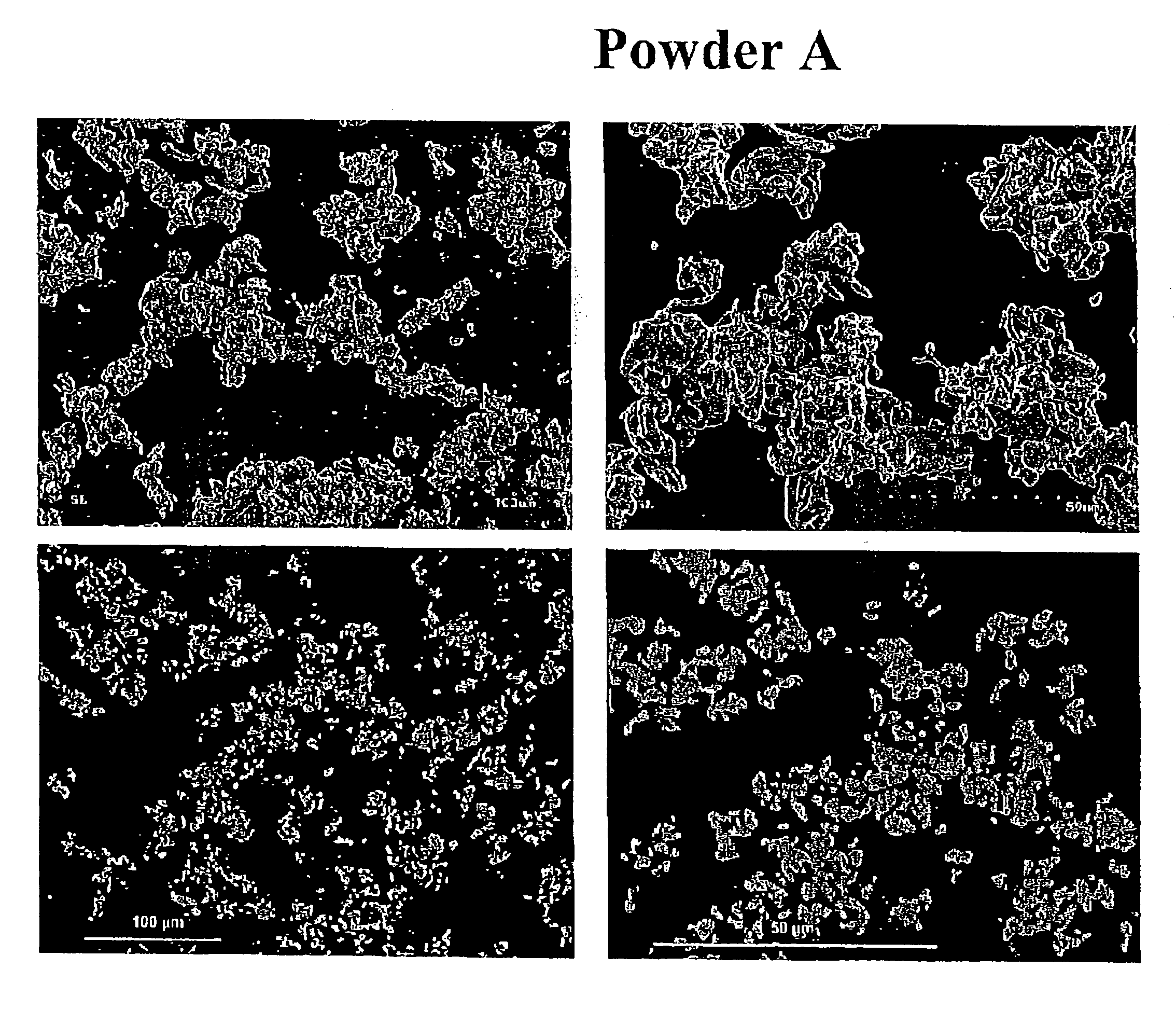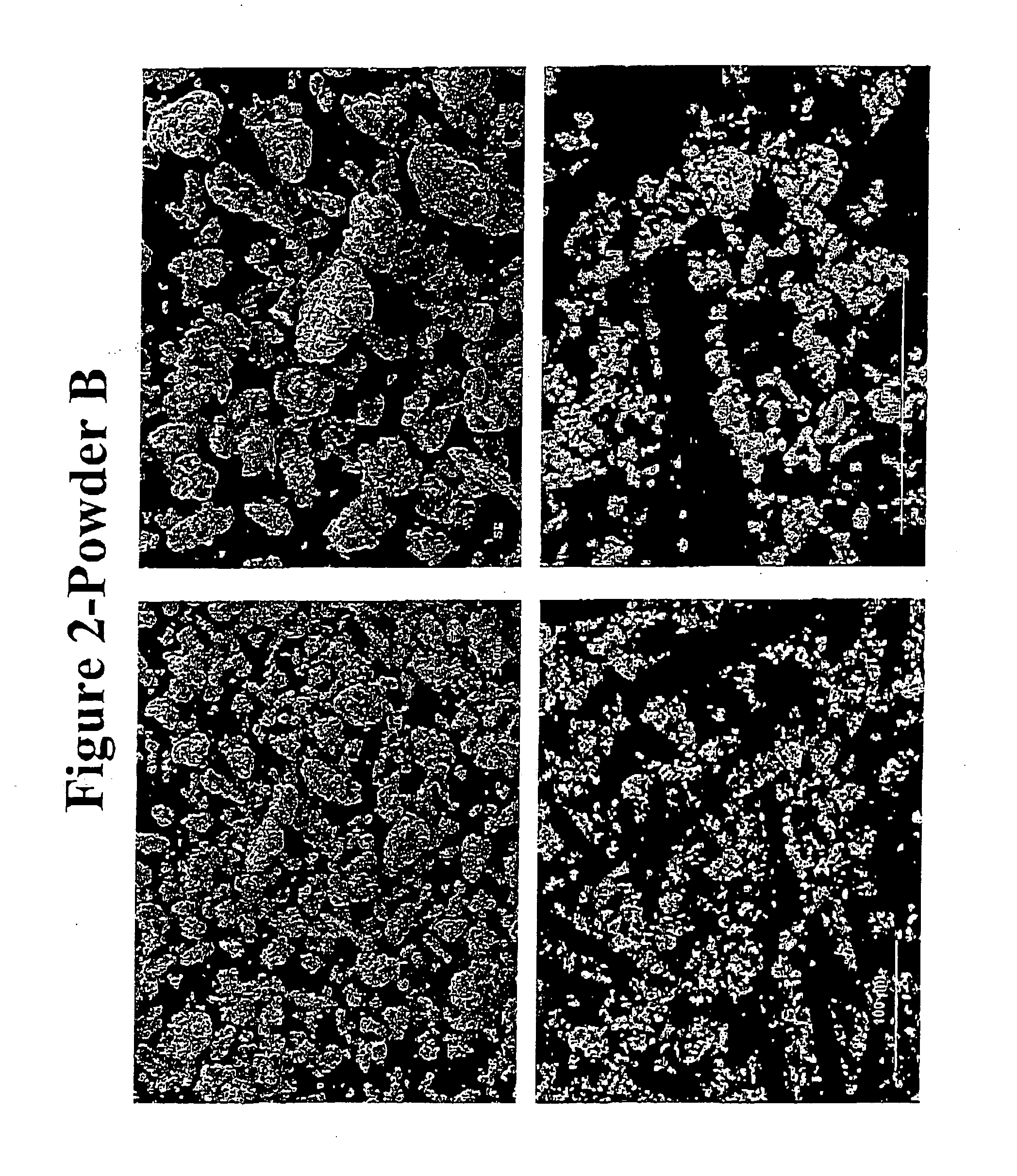Food additive
a technology of additives and food, applied in the field of food and feed fortification, can solve the problems of high production cost of carbonyl powders, high production cost of these powders, and low iron powder production cost, and achieve the effect of satisfying the bioavailability of iron
- Summary
- Abstract
- Description
- Claims
- Application Information
AI Technical Summary
Benefits of technology
Problems solved by technology
Method used
Image
Examples
example 1
[0023] This example discloses a process for the preparation of an iron powder, which has high bioavailability as measured by the dissolution rate and which can be used as food or feed fortification.
[0024] Hematite with a grain size of 5-20 μm was mixed with coal having a grain size less than 1 mm. The amount of added coal was 12% by weight. The obtained mixture was reduced in an furnace at about 1000° C. Hydrogen gas was added at the end of the furnace and forced to flow in a direction counter the flow of the hematite material. The added amount of hydrogen gas was 610 m3 / ton of reduced iron. The obtained cake of sponge iron was gently crushed in a standard milling device and sieved on a 325 mesh screen.
[0025]FIG. 1 is a micro photograph of the iron powder produced.
example 2
[0026] The process according to example 1 was repeated but the reduction was performed with hydrogen only and the starting material used was an iron oxide which had been obtained as a by product from acid regeneration.
[0027]FIG. 2 is a micro photograph of the iron powder produced according to this example.
[0028] A comparison between the new powders A and B according to the above examples 1 and 2, respectively, and presently used iron powders for food fortification is disclosed in the following, wherein Table 1 lists the type of powders and Table 2 the properties of these powders.
TABLE 1Type ofParticlePowderpowdershapeAReducedirregularAccording to theiron oxideinventionBreducedirregularAccording to theiron oxideinventionCReducedirregularCommercially availableiron oxideDReducedsphericalAccording to U.S. Pat. No.iron oxide6589667EReducedirregularCommercially availableiron oxideFReducedirregularCommercially availableiron oxideGReducedirregularCommercially availableiron oxideHelectro...
PUM
| Property | Measurement | Unit |
|---|---|---|
| particle size | aaaaa | aaaaa |
| specific surface area | aaaaa | aaaaa |
| particle size | aaaaa | aaaaa |
Abstract
Description
Claims
Application Information
 Login to View More
Login to View More - R&D
- Intellectual Property
- Life Sciences
- Materials
- Tech Scout
- Unparalleled Data Quality
- Higher Quality Content
- 60% Fewer Hallucinations
Browse by: Latest US Patents, China's latest patents, Technical Efficacy Thesaurus, Application Domain, Technology Topic, Popular Technical Reports.
© 2025 PatSnap. All rights reserved.Legal|Privacy policy|Modern Slavery Act Transparency Statement|Sitemap|About US| Contact US: help@patsnap.com



